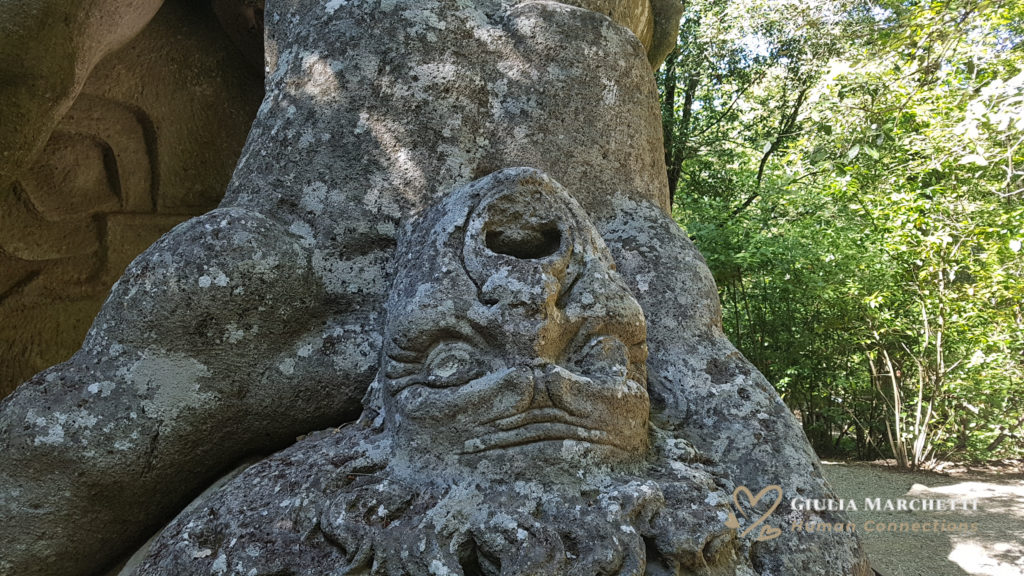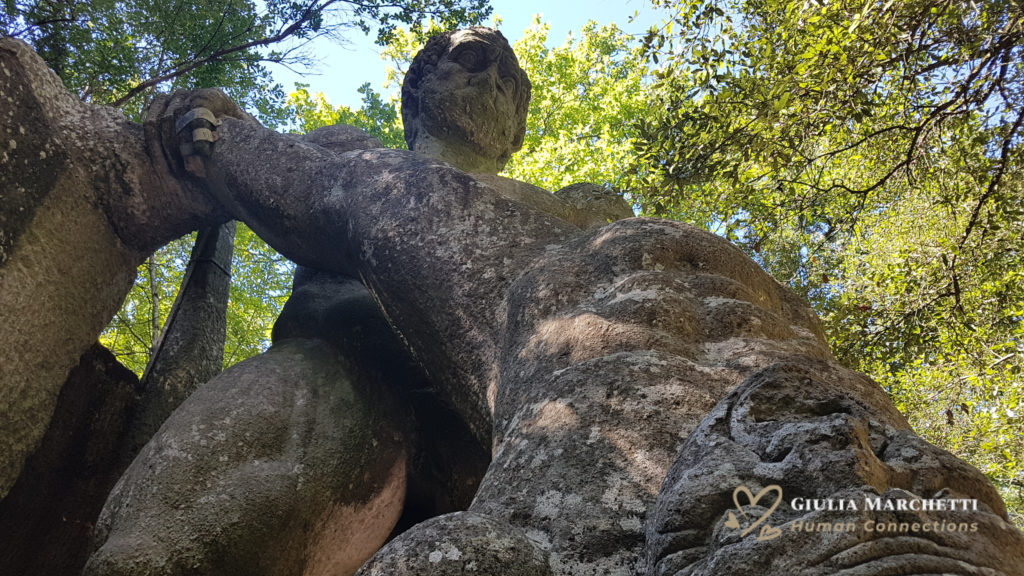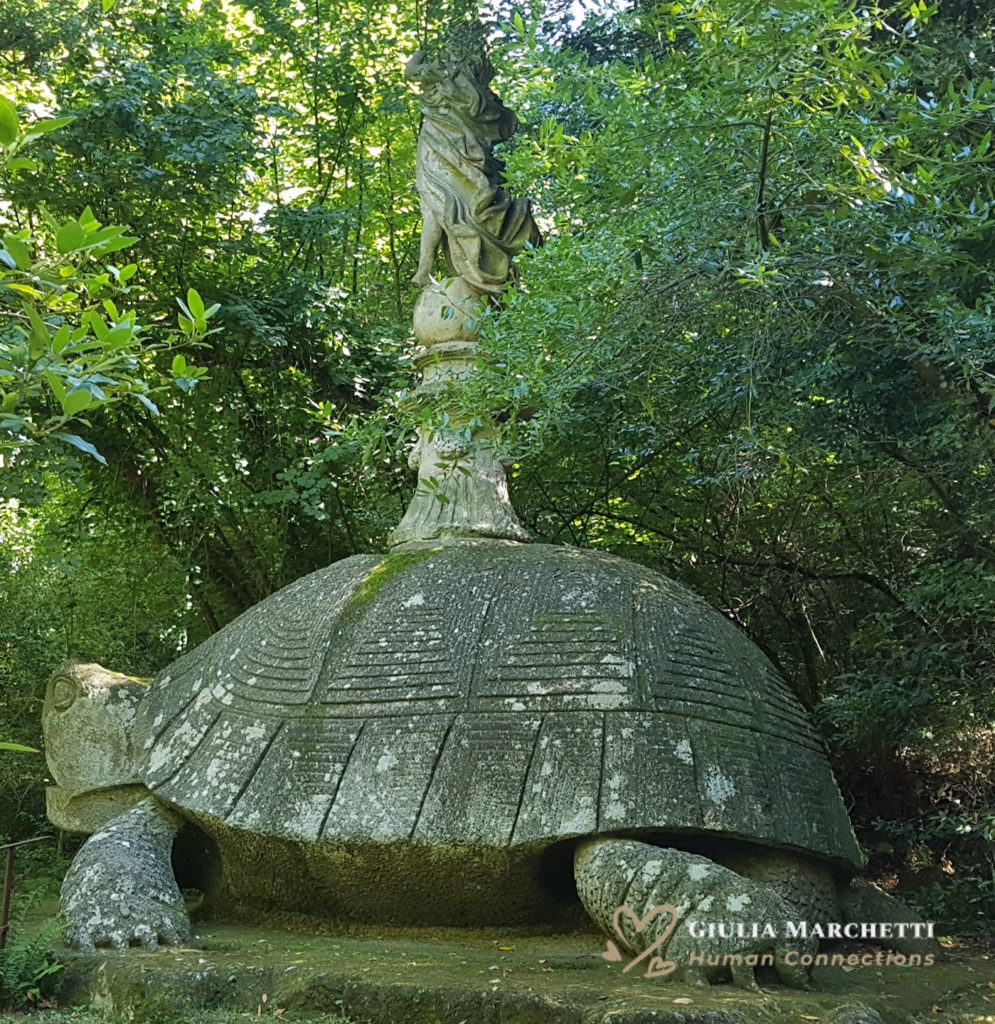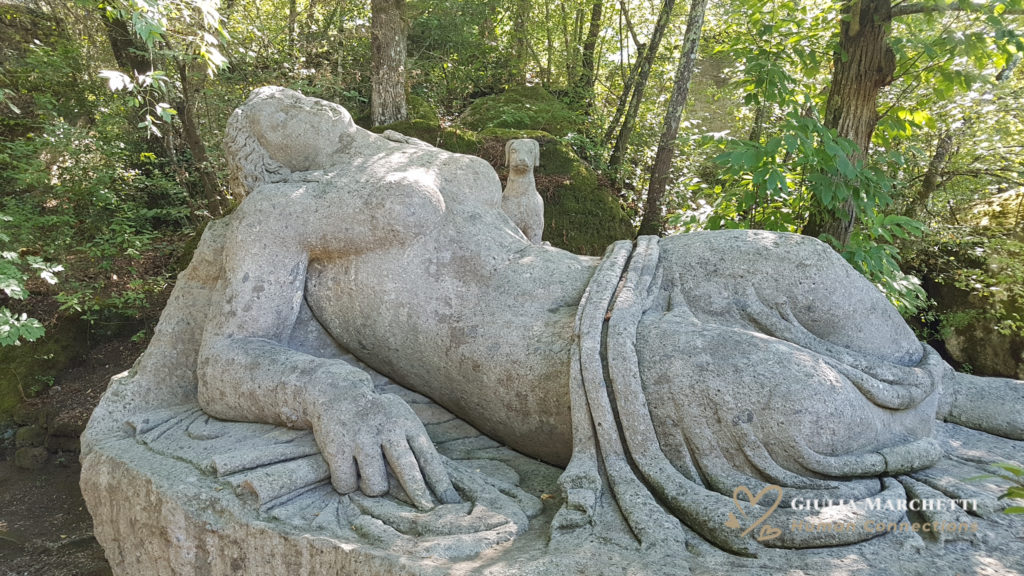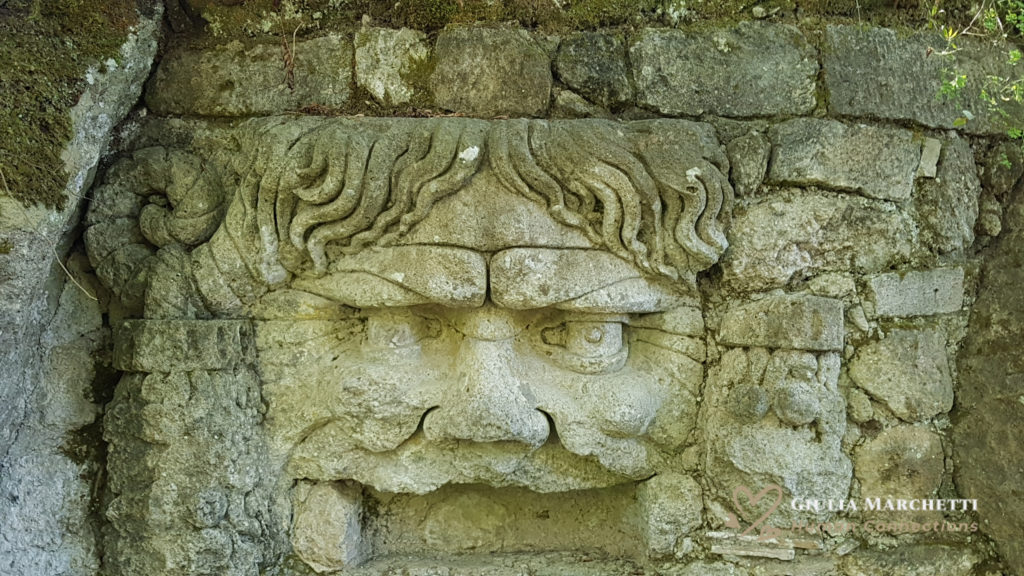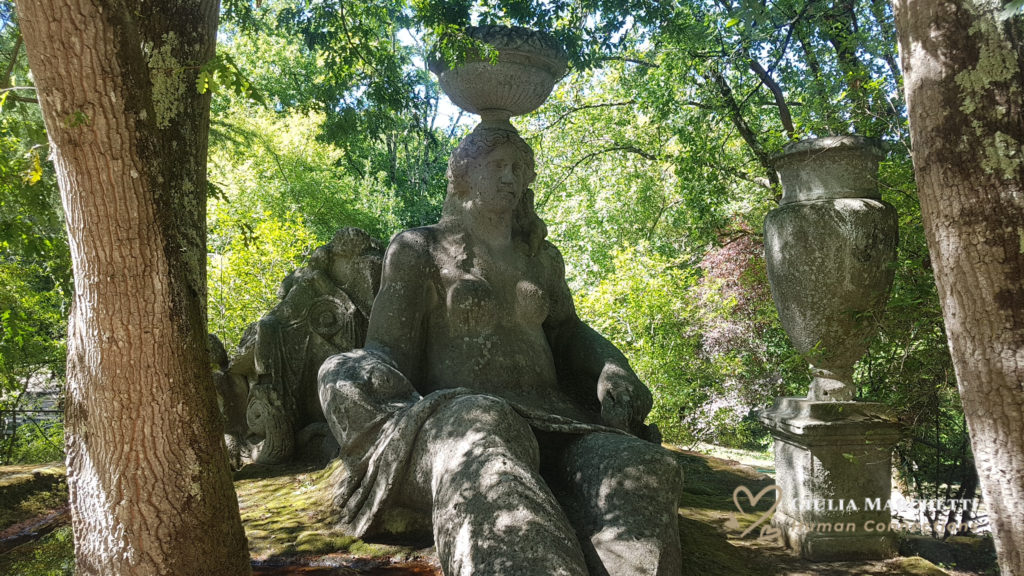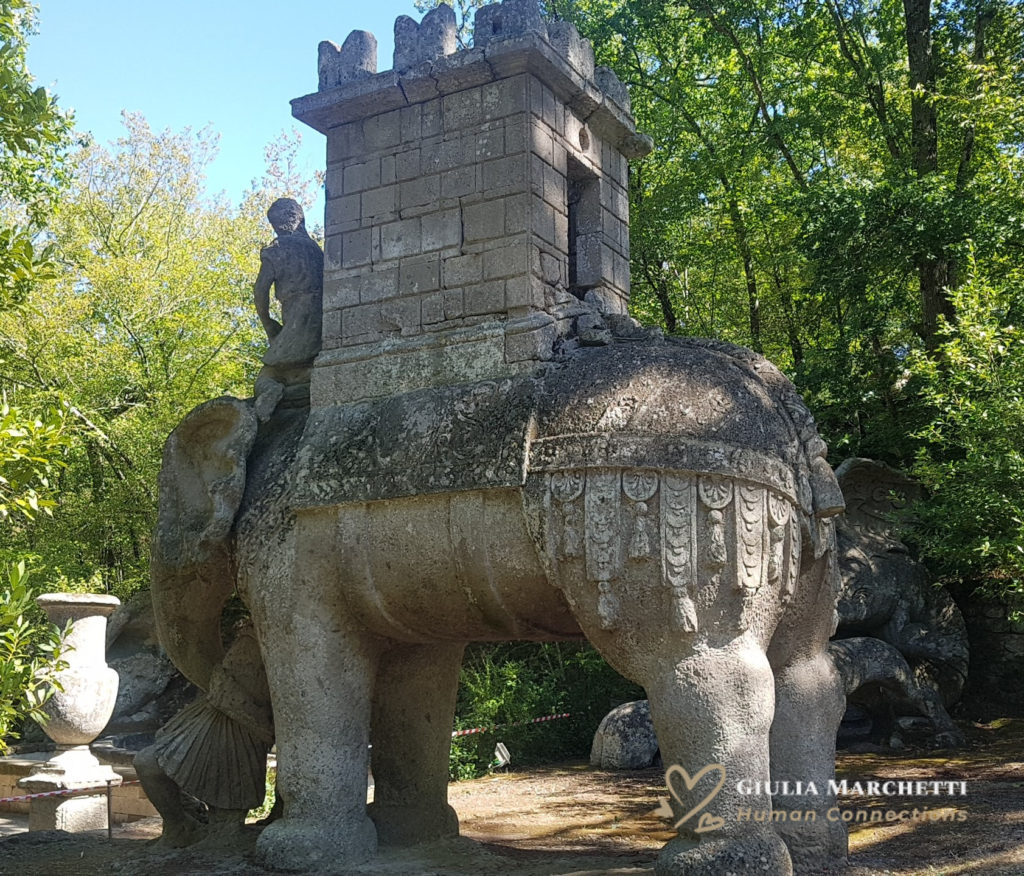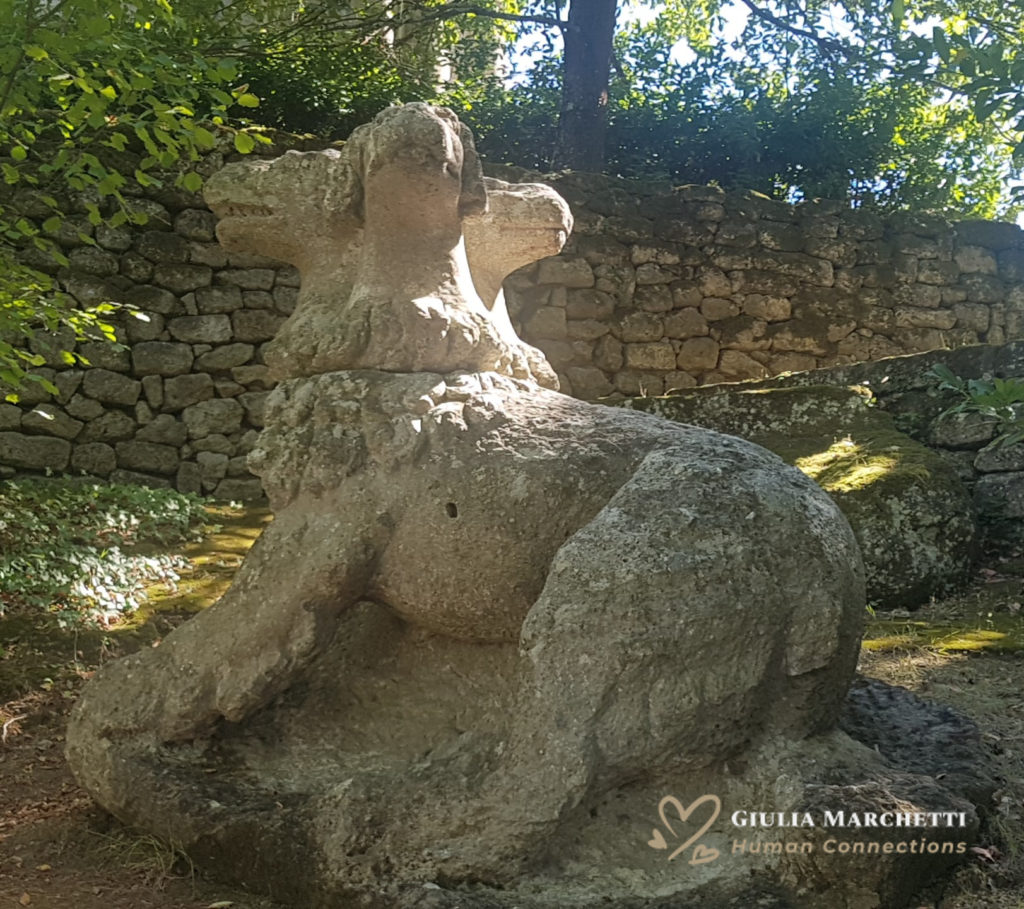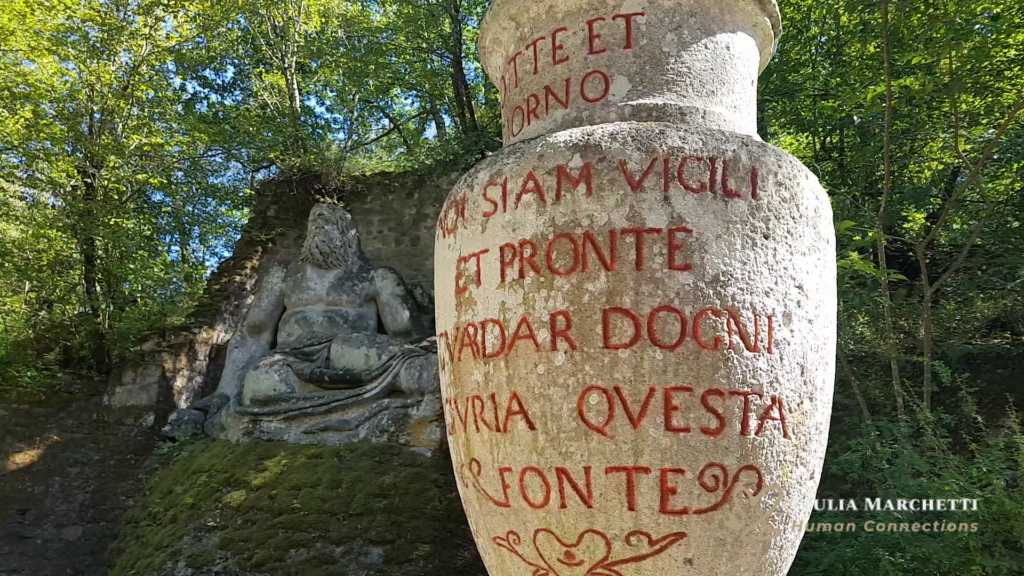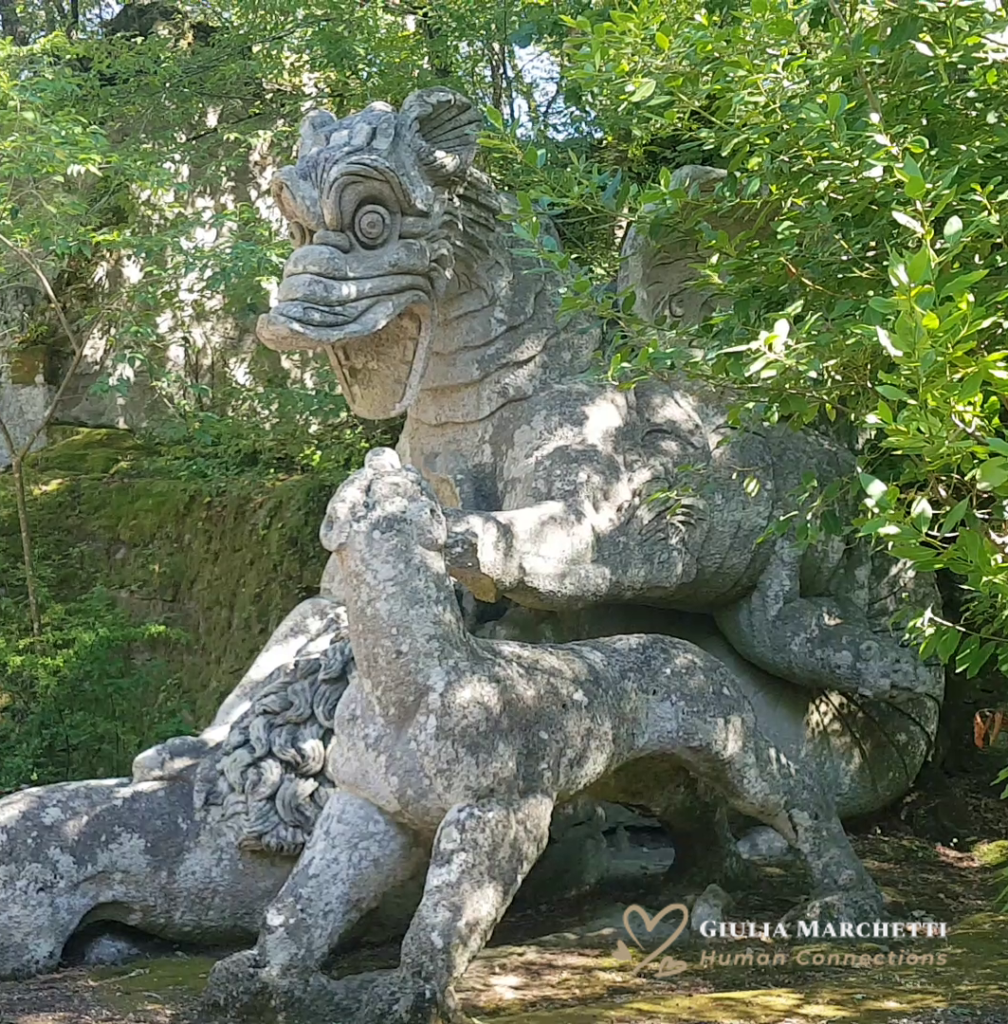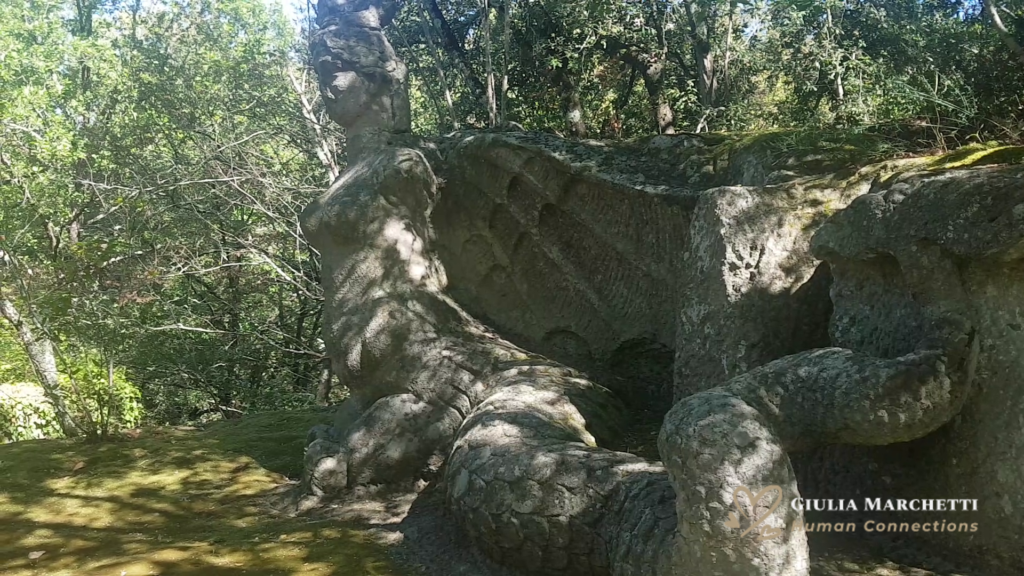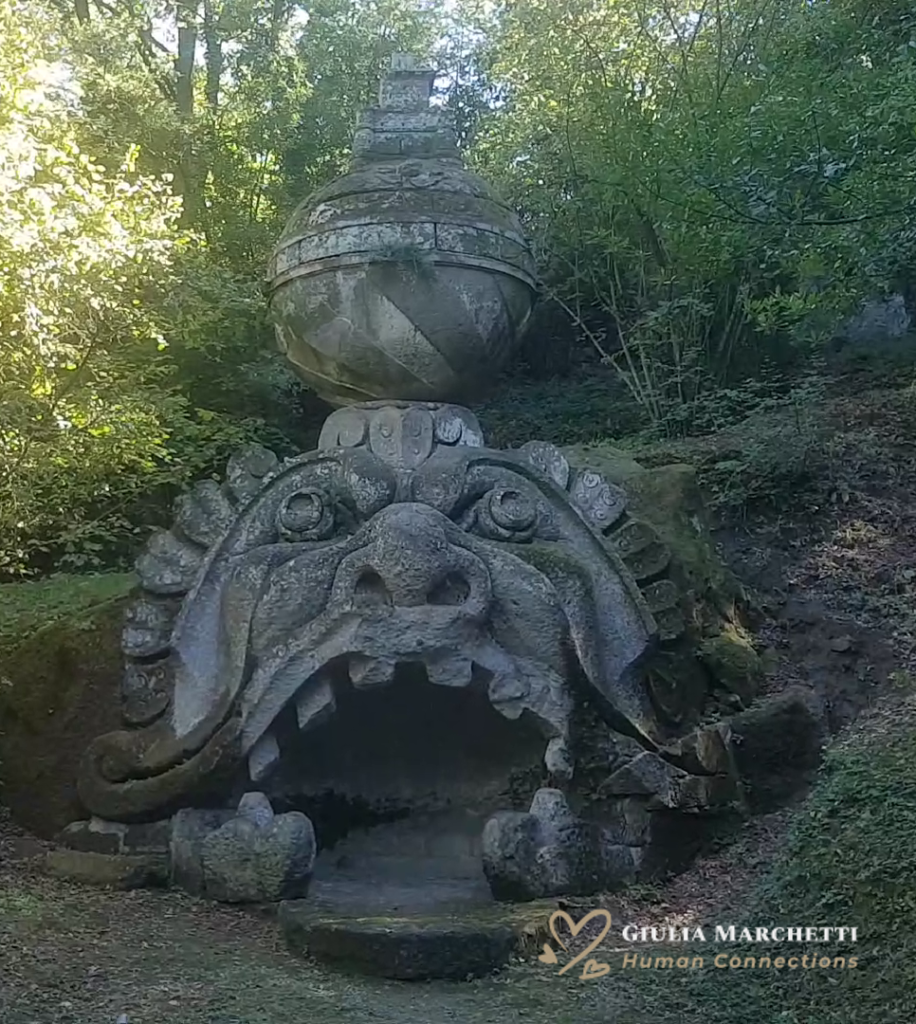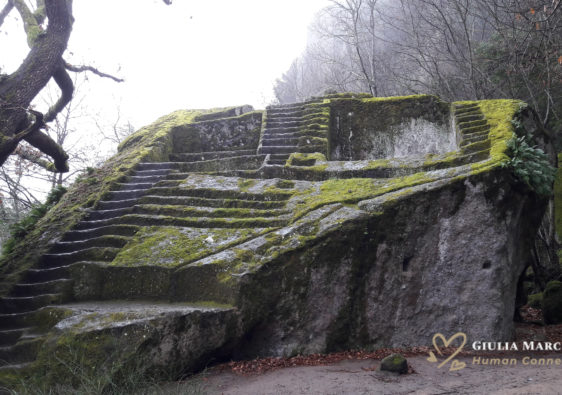A surreal Sacred Wood that fulfills the delusional style of Salvador Dalì
Imagine being in Italy, in the heart of the Etruscan land called Tuscia. Imagine being in Bomarzo, a small town perched on a rocky hill with its impressive castle. Imagine being attracted by this green valley that as a natural amphitheater surrounds a Sacred Wood. Imagine finding yourself wandering into this mysterious wood among huge coniferous and deciduous trees. Monstrous and gigantic stone sculptures suddenly appear in front of your eyes to surprise, confuse, and scare you. A delirium of mythological figures mixed with human and animal forms that want to lead you into a dreamlike experience. Into a kind of mystical and spiritual dimension. Disoriented, you come across sculptures that show cryptic messages as warnings to decipher, while other scary creatures seem to chase you with their jaws agape, as if to bite and swallow you.
No one can say for sure what inspired the creation of this surreal place, but it is certain that it came out from the enigmatic mind of a Prince who lived in the 16th century.
There is no way to escape, except by fighting each single stone monster. But don’t be afraid, you just ended up in your initiatory journey and you have to face each terrible monster in order to overcome the adversities you will meet in your life. And, in the end, you will meet yourself to discover who you really are.
This is how our inner journey in the 16th century was designed in this Sacred Wood, and this is how it still works for everyone today, because we are human and we are connected beyond space and time!
History of the Park of the Monsters of Bomarzo (Italy)
The Prince Pier Francesco Orsini, also known as Vicino, who lived in Bomarzo in the 16th century, wanted to create a mystical world to give refuge to his wounded soul and escape from the horror of the brutal war he fought following the papal troops. But he also wanted to create a Sacred Grove, as he used to call it, to consecrate it to the memory of his beloved wife Giulia Farnese, who prematurely died after 10 years of marriage. There is no wonder then if the monumental complex became an expression of scare and grief caused by the torments of life. Torments that he wanted to materialize in monster statues, to have a tactile enemy to defeat. A way to exorcise his pain and grief.
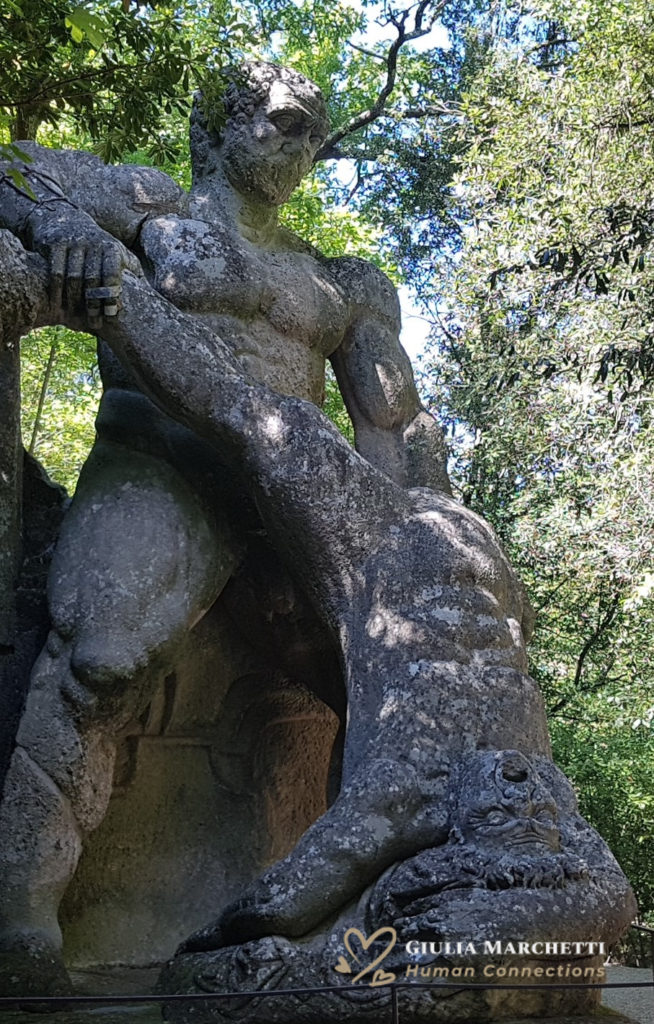
The imagination of Pier Francesco Orsini was also fed by his erudite mind. As a refined man of letters, he loved to surround himself with humanists, philosophers, and alchemists, and in order to realize the spooky sculptures, he hired the architect Pirro Ligorio, a disciple of Michelangelo Buonarroti. The same architect would become famous for designing the majestic Villa d’Este in Tivoli (Rome) and for completing the Cathedral of Saint Peter in Rome after the death of his Maestro.
The Prince planned everything in the span of 25 years. From 1560 and 1585 many gigantic stone monster sculptures were scattered in 3 hectares of wood, apparently without a rational location, perspective relationship, or coherence of dimensions. Probably aiming to confuse the visitors.
These sculptures realized in basalto, a stone of volcanic origin that was already in the wooded valley, transformed the forest into a wonderland park, where the Prince’s friends could come and get mesmerized by the almost illusory scenario. Each statue, carved from those huge blocks of stone, was turned into scary beasts, over-sized-mythological figures, dragons, sphinxes, sirens, monstrous fish-head, giants, or grotesque creatures in a seemingly senseless blend of mythology, allegory, and oddity.
The most famous monster is the mouth of Orcus, the god of the underworld. Its image is well known all around the world. An inscription around its lips says “Ogni pensiero vola” (Every thought flies).
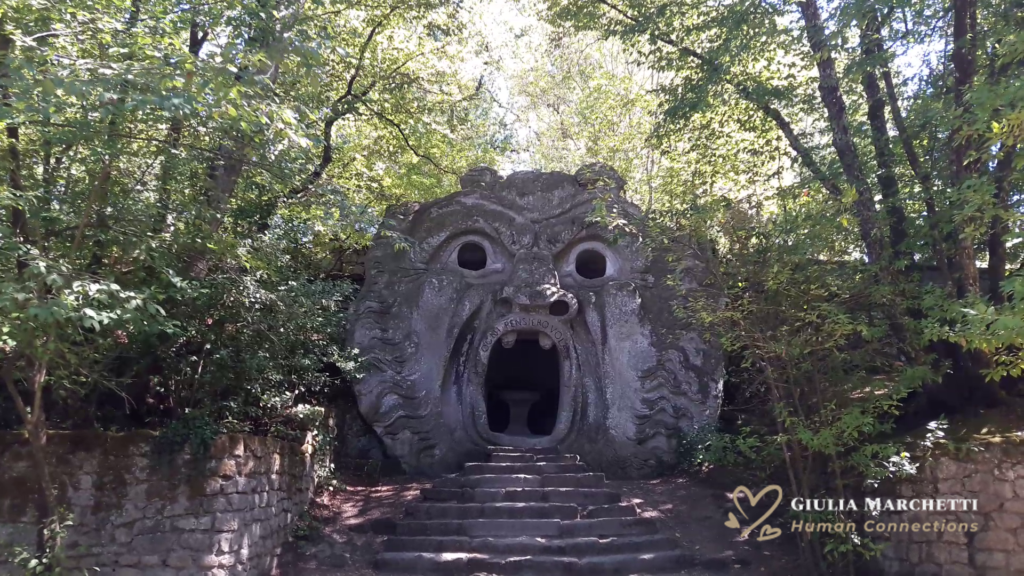
The most disorienting building is instead the leaning house, a dwelling built on top of sloping rock. As soon as you cross the threshold, you will be tricked by the perspective and by the sloping floor. You will lose your balance and feel dizzy for a while. A very strange sensory experience.
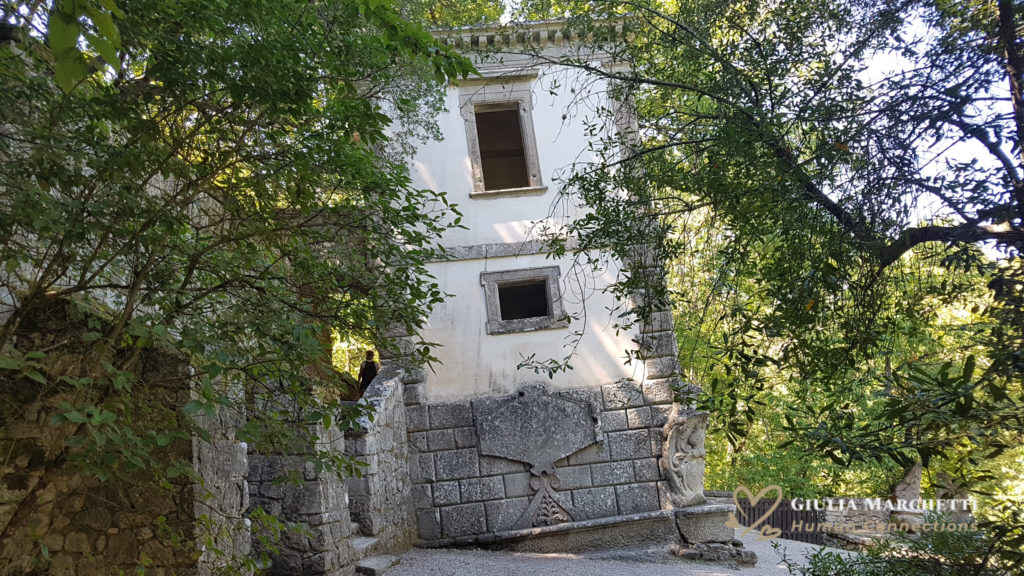
This bizarre garden was also designed as an initiatory journey, where visitors have to face many adversities in order to master the difficulties of life. The same path that Pier Francesco Orsini had to follow to overcome the tragedies of his life. Each monster represents his own personal demon, while the long steep staircase, leading to the Temple at the top of the garden, symbolizes the way to heaven. This octagonal Temple of Eternity, also known as Tempietto, is considered a memorial dedicated to his beloved Giulia.
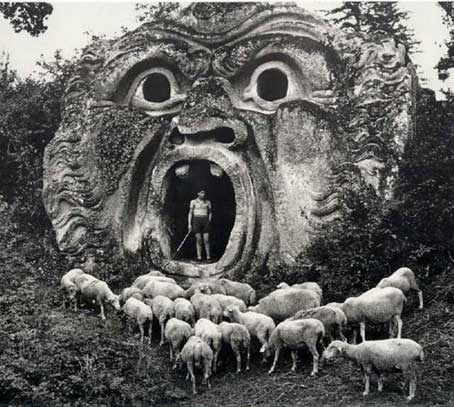
But unfortunately, the glory of this sacred wood, unique in the world, did not last long because, after the Prince passed away, it was abandoned for hundreds of years.
Orsini’s heirs considered the park only a figment of a crazy and visionary mind and no one cared for it. Farmers started cultivating the area, while animals grazed among the sculptures, and the vegetation covered the stones. Some of these huge monsters were moved from their original locations and the whole park fell into oblivion.
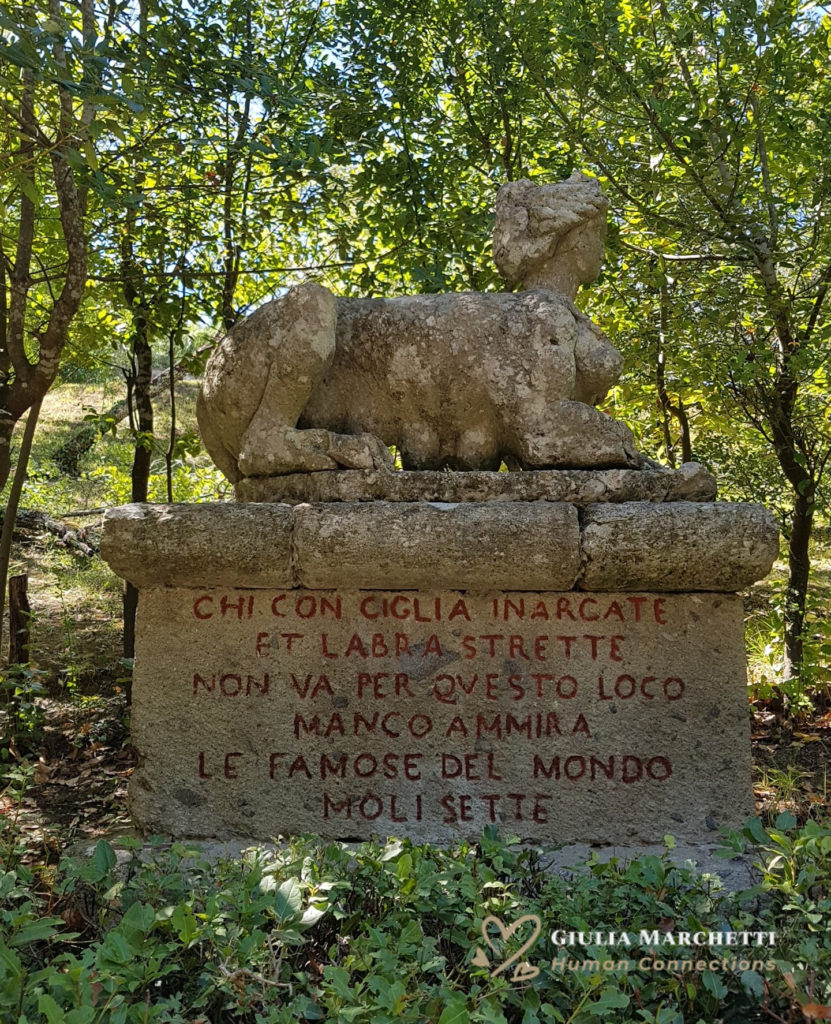
However, the esoteric charm of this place was well known in academic circles, and some artists and men of letters as Goethe, Lorrin, and Jean Cocteau came to visit it, attracted by the mystery of the inscriptions on the sculptures, and eager to find the meaning of this colossal garden of wonder.
Salvador Dalí, the Spanish surrealist painter, came on November 10th, 1948, and he was so struck by his visit that he defined the park “A unique historical invention”. A precious video shows the eccentric artist wandering through the grotesque statues and surreal figures, and in this scenery bordering on delirium, he finds the maximum expression of his nature and style.
Over the years the ownership of the park passed from hand to hand, until, in the twentieth century, it was auctioned. The Municipality of Bomarzo bought only the Castle perched on the top of Bomarzo, the antique residence of the Prince Pier Francesco Orsini that now hosts the Town Hall.
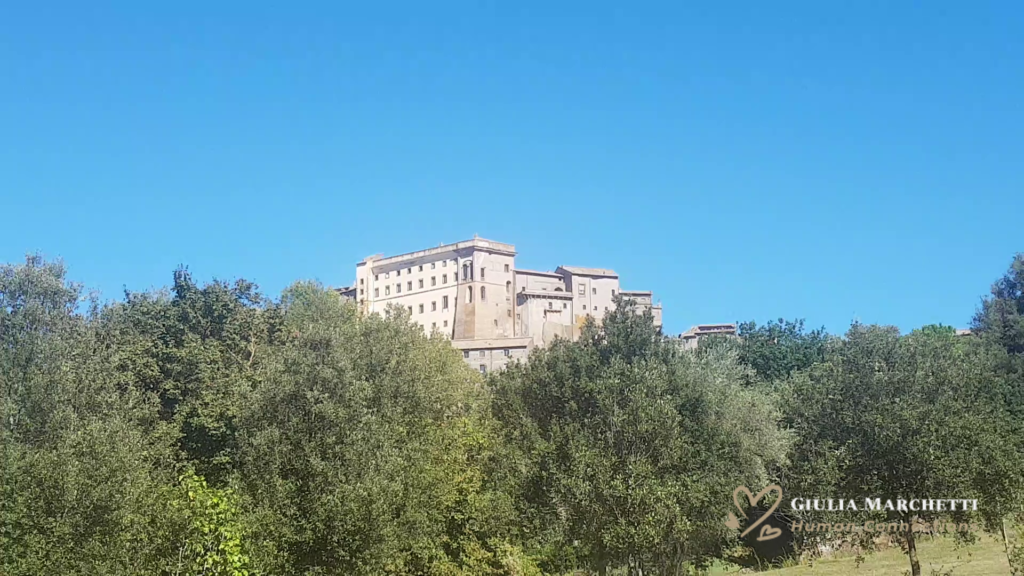
The park was instead purchased by the Bettini family (1954) who, recognizing its value, began the restoration work. Thanks to the courageous investment of this family, the Sacred Wood was literally awakened from 400 years of oblivion and now it is open to the world to be enjoyed.
Your initiatory journey
What is the meaning behind each sculpture? What did Orsini want to communicate through his bizarre creation? The debate around this theme continues today among art history scholars.
But what if you forget any preconceived interpretation and find your own meaning? This is what I highly recommend.
Sure, you can use the map provided at the entrance, follow the path suggested, and read the captions, but be also free to unleash your imagination and your perception.
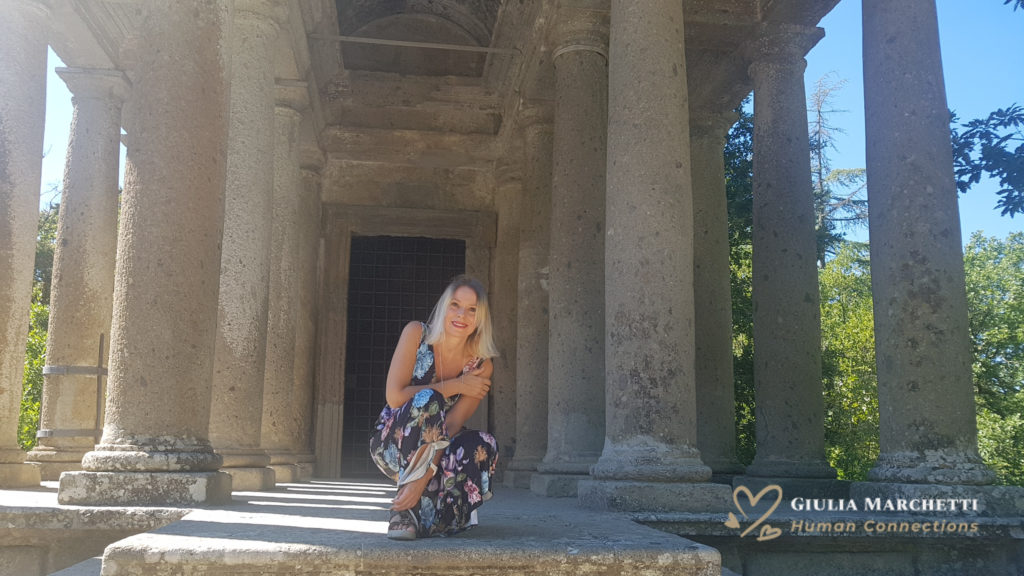
Let yourself be carried away by your own senses. Have you ever met those monsters in your life? Does it remind you of a life experience you already faced? Have you ever fought that fear?
In this Sacred Wood, you are also dialoguing with ancient minds who designed these creatures and carved these stones.
How magic is to discover that many centuries ago life was a challenge against grief and adversities just as it is still today. Facing with courage any difficult moment of our lives is the only way to grow stronger and wiser. This is the law of life, then as now!
Find in this Park of Monsters your initiatory journey. Face each demon of your soul, climb the stairs to your temple, and meet yourself. In your final destination, you will discover who you really are. This special journey is just the same, then as now, because we are human, and we are connected beyond space and time!


